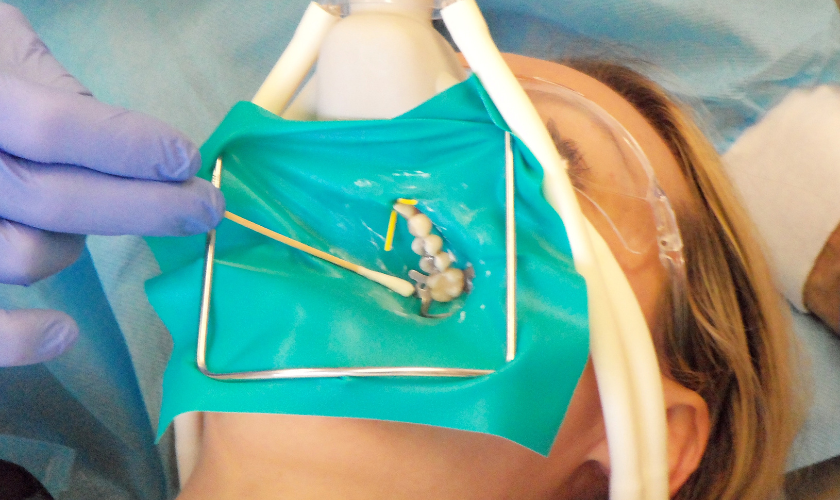
For decades, dental amalgam fillings, commonly known as silver fillings, have been the go-to solution for repairing cavities. However, controversy surrounds these fillings due to the presence of mercury, a toxic metal. This raises the question: is it safe to remove mercury fillings?
The answer, like most things in dentistry, isn't a simple yes or no. Here, we'll delve into the science behind mercury fillings, the potential risks and benefits of removal, and important safety considerations for the procedure.
Understanding Mercury Fillings
Dental amalgam is a mixture of metals, including mercury, silver, tin, and copper. It's known for its durability and affordability, making it a popular choice for fillings. However, concerns exist regarding the safety of mercury, a known neurotoxin.
The American Dental Association (ADA) maintains that amalgam fillings are safe and effective for most people. They argue that the amount of mercury released from these fillings is very low and unlikely to cause health problems.
However, some health professionals believe even small amounts of mercury exposure can be detrimental, particularly for vulnerable populations like pregnant women, children, and individuals with certain health conditions.
Potential Risks of Mercury Fillings
Mercury fillings, also known as dental amalgams, have been a widely used material for decades. However, there has been ongoing debate about their safety due to the presence of mercury. While the majority of studies haven't found definitive links to major health problems, some potential risks are worth considering:
Mercury Exposure:
- Release During Procedures: The biggest concern lies in the release of mercury vapor during the placement and removal of amalgam fillings. While the amount is small, some research suggests it may be measurable and potentially accumulate in the body over time.
- Chewing and Grinding: Even with a properly placed filling, everyday wear and tear from chewing can cause tiny amounts of mercury vapor to be released. This is generally considered to be minimal, but some people may be concerned, especially those with high exposure to mercury from other sources like certain fish.
Health Concerns:
- Neurological Effects: Some studies have suggested a possible link between mercury fillings and neurological issues. This includes concerns about headaches, fatigue, memory problems, and even tremors. However, these studies are often inconclusive and more research is needed to determine a definitive cause-and-effect relationship.
- Developing Nervous Systems: There is particular concern for pregnant women, fetuses, and young children. Their developing nervous systems may be more susceptible to the potential effects of mercury exposure.
- Allergic Reactions: Although uncommon, some people may develop an allergy to mercury or other components of dental amalgams. This can cause symptoms like inflammation of the gums (gingivitis), red and painful sores in the mouth, and even rashes on the face or other parts of the body.
Additional Considerations:
- Cumulative Effects: The potential risks of mercury fillings may be amplified for people with existing health conditions or those with high exposure to mercury from other sources like their diet or occupation.
- Long-Term Durability: While amalgam fillings can last for many years, they may eventually crack or wear down, necessitating replacement and potentially exposing you to mercury again.
It's important to discuss these potential risks with your dentist Hayden to determine if mercury fillings are the right choice for you. They can advise you on alternative filling materials and help you make an informed decision based on your individual needs and health history.
Should You Remove Your Mercury Fillings?
The decision to remove your mercury fillings is a personal one, best made in consultation with your dentist. Here are some factors to consider:
- Condition of Existing Fillings: If your fillings are intact and not causing problems, the ADA generally recommends leaving them in place. Removing them may unnecessarily damage healthy tooth structure. As a result, it can expose you to more mercury during the removal process.
- Overall Health: Pregnant women, nursing mothers, young children, and individuals with certain health conditions (e.g., kidney disease) may benefit from removing mercury fillings due to their increased vulnerability to mercury exposure.
- Symptoms: If you experience symptoms you suspect are related to mercury fillings, discuss this with your dentist.
- Your Preferences: If you're concerned about the potential health risks of mercury, even if minimal, you may opt for removal and replacement with alternative materials.
Safety Considerations for Mercury Filling Removal
If you and your dentist decide to remove your mercury fillings, it's crucial to choose a dentist who follows strict safety protocols. These include:
- Ventilation System: The dentist's office should have a proper ventilation system to remove mercury vapor during the removal process.
- Isolation Techniques: The dentist will use techniques like rubber dams to isolate the tooth being treated and minimize mercury exposure.
- Water Cooled Drills: Using water-cooled drills helps reduce the amount of heat generated during removal, minimizing mercury vapor release.
- Proper Disposal: The removed fillings must be disposed of according to hazardous waste regulations.
Alternatives to Mercury Fillings
Several safe and effective alternatives exist for replacing mercury fillings:
- Composite Resins: These tooth-colored fillings are popular due to their aesthetic appeal and ability to bond directly to the tooth structure. They are a good choice for most people.
- Glass Ionomer Cement: This tooth-colored material releases fluoride, which helps strengthen the tooth and prevent further decay.
- Cast Gold: Durable and long-lasting, gold fillings are a good option for large cavities or teeth subjected to significant wear. However, they are more expensive than other options.
The decision to remove or keep your mercury fillings is a personal one. Discuss your concerns and health history with your dentist to determine the best course of action for you. It's important to ensure that the dentist follows proper safety protocols to minimize mercury exposure. Ultimately, good oral hygiene practices and regular dental checkups are vital for maintaining optimal oral health.
